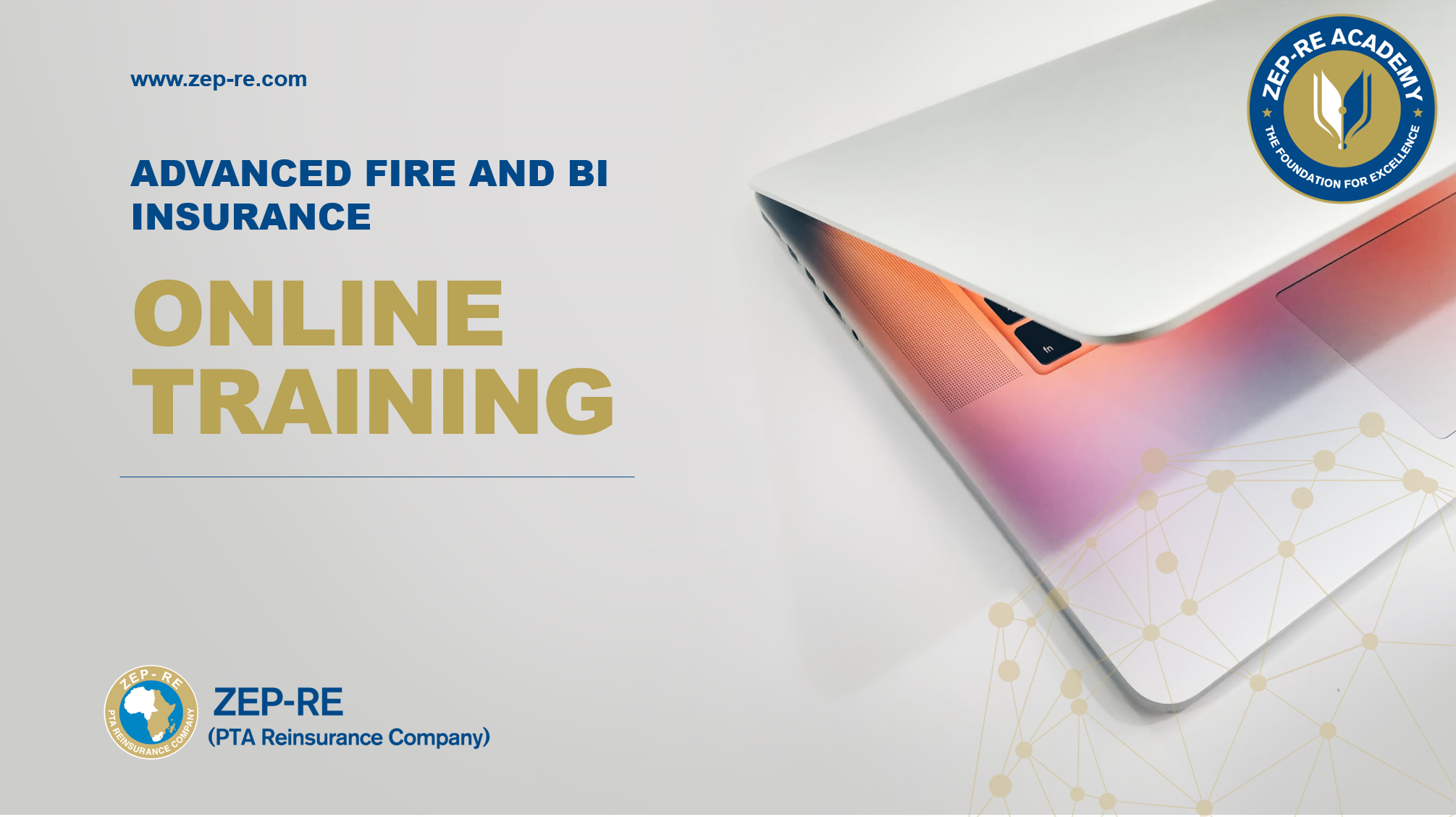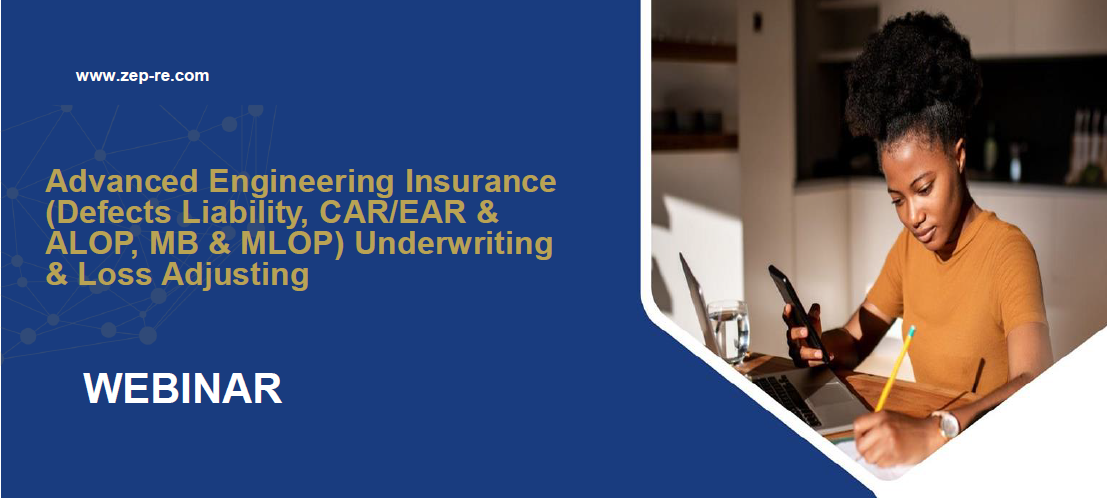
Overview and Learning Outcomes of the CII Accredited Programs
- Proficiency in Short Term Reinsurance Practice and Claims Management (PSTRP)
- Fire and Business Interruption Insurance Underwriting and Claims Management
- Engineering (CAR, EAR, IAR, MB) Insurance Underwriting and Claims Management Course
- Reinsurance Program Design and Pricing
- Insurance and Reinsurance Claims Management
- Reinsurance Accounting Course
- Proficiency in Reinsurance for Regulators
- Life Assurance and Underwriting and Claims Management
- Medical Insurance Underwriting and Claims Management
- Enterprise Risk Management
Proficiency in Short Term Reinsurance Practice and Claims Management (PSTRP)
Overview
The Proficiency in Short-Term Reinsurance Practice and Claims Management Course (PSTRP) is a comprehensive examinable training program which combines all key reinsurance functions of underwriting, program design, accounting, reinsurance portfolio placement and
claims management. It is designed to equip the trainees with technical reinsurance knowledge and skills that would enable them carry out reinsurance underwriting, accounting and claims tasks competently.
Learning Outcomes
- To demonstrate an understanding of reinsurance business.
- To demonstrate an understanding of the process of reinsurance underwriting and claims.
- To receive, process, and finalize reinsurance underwriting and claims documentation.
- To calculate reinsurance related accounts within the established standards and framework.

Fire and Business Interruption Insurance Underwriting and Claims Management
Overview
The Fire and Business Interruption Insurance Underwriting and Claims Management Course aims to provide knowledge and skills needed to assess, evaluate, underwrite, and rate fire and business interruption insurance risks, the calculation of EML/PML, the appreciation of manufacturing processes and how they affect business interruption insurance exposures.
Learning Outcomes
- To identify risk exposures to properties under fire and business interruption policies.
- To assess the application of risk management tools to minimize or prevent loss.
- To explain the underwriting and rating processes for fire and business interruption risks.
- To evaluate and quantify the loss amounts and claims payable by (re)insurers.

Engineering (CAR, EAR, IAR, MB) Insurance Underwriting and Claims Management Course
Overview
The Engineering (CAR, EAR, IAR, MB) Insurance Underwriting and Claims Management Course is designed to build technical knowledge and skill needed to assess, appraise, underwrite, and rate engineering insurances. It is further designed to cover critical aspects of the Engineering Insurance Claims Management considered by loss adjustors when handling claims.
Learning Outcomes
- To identify and assess the risks in engineering insurance.
- To discuss appropriate risk management tools to mitigate engineering risks.
- To apply appropriate rating on risks and charge commensurate premiums.
- To evaluate loss adjusters’ considerations while handling engineering claims.

Reinsurance Program Design and Pricing
Overview
The Reinsurance Program Design and Pricing course is designed to equip trainees with technical knowledge and skills to design effective reinsurance programmes and to understand the pricing mechanisms for proportional and non-proportional reinsurance.
Learning Outcomes
- To describe the concept of reinsurance program design.
- To explain the need for a reinsurance program design.
- To investigate the steps involved in designing a reinsurance program.
- To assess the critical considerations for an effective reinsurance program.

Insurance and Reinsurance Claims Management
Overview
The aim of the Insurance and Reinsurance Claims Management course is to equip trainees with the skills required for prudent management of insurance and reinsurance claims. Further it is designed to provide trainees with the knowledge of the roles of service providers in the claims process as well articulating the measures for reducing insurance related fraud.
Learning Outcomes
- To describe the process of handling claims for various reinsurance contracts.
- To demonstrate claim cessioning for various treaties.
- To explain the application of recovery mechanisms from reinsurers for various types of contracts.
Reinsurance Accounting Course
Overview
The Reinsurance Accounting Course is designed to help trainees understand the processes involved in reinsurance accounting for both proportional and non-proportional treaties.
Learning Outcomes
- To explain the nature of reinsurance accounting.
- To describe the application of various clauses in preparation of proportional reinsurance treaty accounts and non-proportional treaty end year adjustments.
- To demonstrate the calculation of various premiums and commissions in the treaty accounts.
Proficiency in Reinsurance for Regulators
Overview
The aim of the Proficiency in Reinsurance for Regulators course is to equip trainees with an understanding of the role of reinsurance in developing insurance markets, and the critical aspects of reinsurance that encourage growth and functioning of insurance markets.
Learning Outcomes
- To demonstrate an understanding of the role of reinsurance in developing insurance markets.
- To examine the critical aspects of the reinsurance markets and how these enable the growth and functioning of insurance markets.
- To analyze how access to insurance markets can address the socio-economic challenges of a country’s population.
Life Assurance and Underwriting and Claims Management
Overview
The aim of the Life Assurance and Underwriting and Claims Management course is to build the knowledge and skill set needed to effectively manage Life Business in a fast-changing global environment and to enhance participants’ perception of the strategic emerging trends in underwriting and reinsurance management.
Learning Outcomes
- To identify and assess the risks in life assurance underwriting.
- To evaluate the strategic emerging trends in underwriting and reinsurance management.
- To examine the pricing techniques, claims recovery and technical accounting of life assurance underwriting.
- To examine the role of actuaries in life assurance management.
Medical Insurance Underwriting and Claims Management
Overview
The Medical Insurance Underwriting and Claims Management course provides an overview of the medical insurance and reinsurance industry by highlighting the key developing trends, challenges facing the industry and their proposed solutions. It underscores the fundamental risk management tools to improve the net position, including the appropriate underwriting and risk management controls, adequate pricing, member and provider management, digital transformation as well as data analytics.
Learning Outcomes
- To examine the status of medical insurance and reinsurance through industry performance analysis.
- To discuss the role of regulation in medical insurance.
- To analyze the risk management tools of medical insurance underwriting.
- To examine the pricing techniques, claims recovery and technical accounting of medical insurance underwriting.
Enterprise Risk Management
Overview
The Enterprise Risk Management Course is a training programme that takes cognizance of today’s challenging business environment that is increasingly complex, unpredictable, and volatile due to factors such as changing technology, shifting markets, fluctuating monetary conditions and new competition. These factors have led to heightened and unprecedented emergence of risks across the entire business spectrum. The aim of the course is to demystify the complexities of enterprise risk management and aid in the establishment of sound risk management practice across organizations.
Learning Outcomes
- To discuss the importance of Enterprise Risk Management to organizations.
- To analyze the importance of risk monitoring and reporting frameworks within the organization.
- To analyze the importance of risk in setting strategy and formulating business plans.
- To explore how risk-based information is used in decision making and managing business performance.
- To examine the importance of having a good risk culture within the organization.